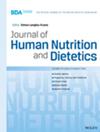Hypomagnesaemia, an independent risk factor for the development of post-transplant diabetes mellitus in liver and renal transplant recipients? A systematic review
Abstract
Background
Post-transplantation diabetes mellitus (PTDM) is common after solid organ transplantation. In the past decade, there has been increasing interest in the association between hypomagnesaemia and the development of PTDM. This systematic review aimed to investigate the current knowledge regarding the association between hypomagnesaemia and PTDM in adult liver and renal transplant recipients.
Methods
A literature search of five databases, Medline, Embase, ProQuest, Scopus and Google Scholar, as well as article reference lists, was performed. Eligible studies that focused on adult liver and renal transplant recipients without pretransplantation hyperglycaemia or diabetes were included. Other eligibility criteria included quantitative studies which reported magnesium concentrations, studies with at least 6 months of follow-up, and studies published in English. The Newcastle–Ottawa Assessment Tool was used for the quality assessment.
Results
In total, 12 studies were included in the final analysis. Eleven focused on renal transplantation and one on liver transplantation. All studies were medium to high quality with eight out of 12 achieving the highest rating of nine. Eight studies found a negative association between either pretransplant or early post-transplant serum magnesium concentration and the risk of PTDM, three studies found no association between these two variables, and one study found a positive association between the magnesium concentration at 8 weeks after transplantation and glycosylated haemoglobin A1C.
Conclusions
Further large-scale prospective studies with at least 6 months of follow-up are needed to confirm these findings, particularly in liver transplantation, to further clarify and explore the relationship between hypomagnesaemia and PTDM.

 求助内容:
求助内容: 应助结果提醒方式:
应助结果提醒方式:


